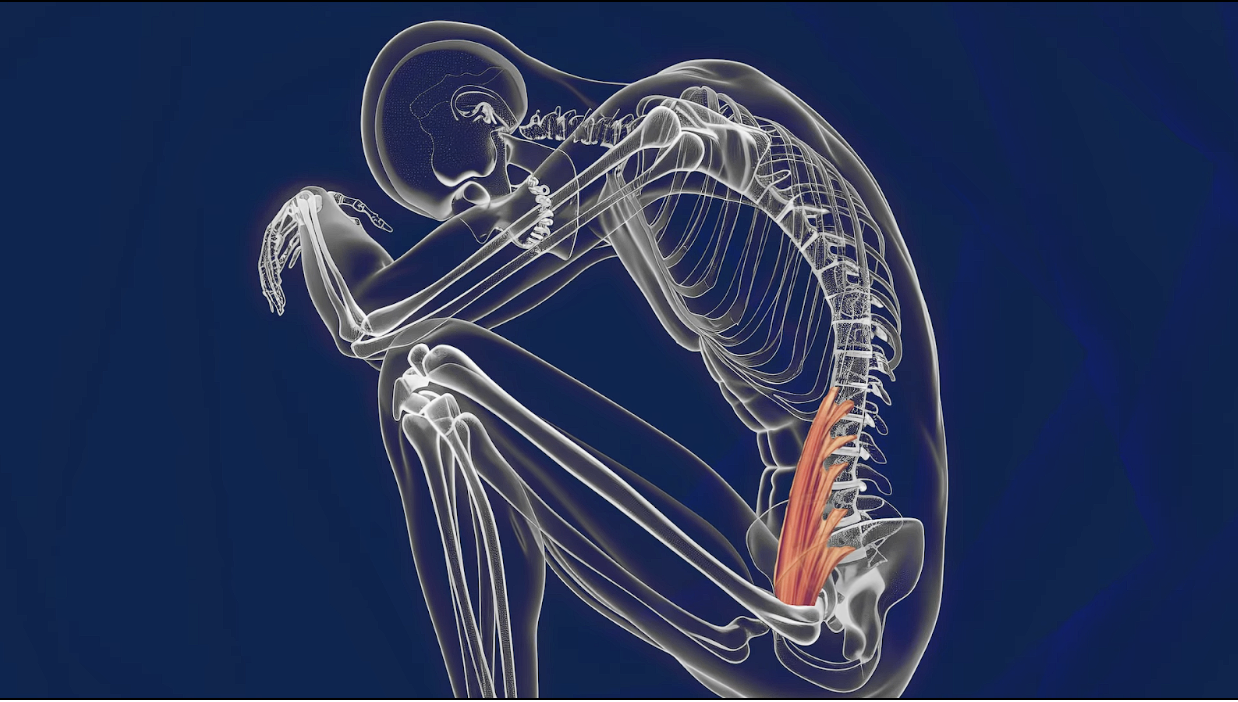Is Stress Tightening Your Psoas Muscle & Causing Back Pain?
Oct 30, 2025
Well, let’s answer the question: is stress tightening your psoas muscle and causing back pain?
You may feel like no matter how much you stretch, your hips and lower back stay tight. This might be more than just physical tension. Let’s talk about a hidden link that doesn’t get nearly enough attention: stress and your psoas muscle.
Yep, your stress could be wrecking your posture.
How Stress Messes with Your Muscles (Especially the Psoas)
The psoas (pronounced "so-as") is a deep hip flexor that attaches directly to your lower spine. It’s one of the only muscles that connects your upper and lower body. It plays a huge role in your posture, walking, and, you guessed it, back pain.

Now here’s the kicker: your psoas doesn’t just react to physical activity. It’s also a major player in the human stress response.
When you’re stressed, whether it’s traffic, work, finances, or emotional stuff, your body goes into fight-or-flight mode. That triggers hormones like cortisol and adrenaline, and those hormones cause your muscles to tighten up defensively.
But not all your muscles react the same way. The psoas does.
Over time, if that stress never really lets up (and let’s be honest, modern life is a stress buffet), that psoas tension becomes chronic. That means tight hips, stiff backs, and posture problems, even if you're not actively doing anything wrong.
Why the Fetal Position Explains Everything
Here’s something wild: your body literally wants to curl into the fetal position when you're under stress.
It’s a protective response. Your body’s way of shielding your vital organs. Problem is, you’re not lying down on the floor curled up, you’re going to work, picking up groceries, sitting at your desk. But your body is still trying to tuck in, subtly tightening those same muscles that bring you into that curled-up shape.

That includes, you guessed it again, the psoas.
And when that muscle stays tight all day, every day? That’s a recipe for chronic lower back pain.
What the Research Says
Let’s back this up with science.
A 2023 study measured stress levels and psoas tightness in 39 adults. The ones with chronic back pain had way tighter psoas muscles, especially on the right side. They also showed higher cortisol levels, a clear sign of elevated stress.
Even more interesting? People without back pain still had tighter psoas muscles when their stress levels were high. So the tightness doesn’t always wait for the pain to kick in. It might be happening in your body right now.
Another study from 2024 looked at stressed-out college students. Those under high stress were nearly four times more likely to report lower back pain, even though they were young and (mostly) healthy.
So, yeah… this connection is real.
Releasing the Psoas = Releasing the Pain
In yoga and bodywork circles, the psoas is often called the “stress muscle.” Some people even experience emotional releases when it finally lets go. Crying during a psoas release isn’t uncommon, and it’s not weird. It’s your nervous system letting go of tension it’s been holding for a long time.

And here's the good news: you can change this.
A 2019 clinical trial tested four groups with chronic back pain. The group that combined physical exercise with relaxation training had the biggest improvements, in reduced pain, anxiety, and hip flexibility. So it’s not just about stretching. You’ve got to work on both the physical and psychological sides of the issue.
So What Can You Do?
Start by simply noticing.
When are you the most stressed? How does your body feel during those moments? Do you catch yourself tensing your belly or clenching your hips without realizing it?
From there, you can start to loosen things up, literally and figuratively.
Here are a few steps that helped me:
- Daily movement: I didn’t just stretch my psoas. I used functional movements to lengthen it over time.
- Reciprocal inhibition: This is a fancy way of saying I activated the opposite muscles (like the glutes and deep abs) to help calm down the tight ones.

- Stress management: I got outside more, ditched some screen time, and made space for calm. It sounds simple, but it added up fast.
- Core Balance Training: I designed this program because I lived this. It’s not just about exercises, it’s about reprogramming how your body holds tension and learning to move in a way that supports your spine. Check out our 7-day free trial here.
Real Talk: Pain and Stress Go Both Ways
As someone who lived with back pain for over a decade, I can tell you firsthand, pain creates stress, and stress creates more pain. It messes with your head, your relationships, and your outlook.

But it’s possible to break the cycle.
When I started targeting both the stress and the physical tension, things finally shifted. It didn’t happen overnight, but those small daily changes made a massive difference.
Final Thoughts (and a Challenge)
So here’s your takeaway: back pain isn’t just physical. And it’s not just emotional. It’s both. And you have more control than you think.
Start small.
Even just doing a bridge pose before bed or in the morning can begin to undo years of hidden stress and tension. Try it for a week, 60 seconds a day. See how you feel.
And don’t forget to get outside, breathe deep, and maybe even laugh a little. That’s medicine, too.
You’ve got this. And I’ll be back next week with more tools to help you stay open, strong, and pain-free.
Until then… get down on the floor and connect to your core.














